The Credibility of the Bible- Mountain With a Black Top

After crossing the Red Sea, Moses notes that the Israelites had great problems because of the lack of drinking water, but that they encountered an oasis with “12 springs and 70 palm trees” through the region. Indeed, today, in Saudi Arabia, ten kilometers away from the Red Sea coast, there is an oasis with 12 springs and about 100 palm trees.
Moses further notes that shortly after leaving this oasis, the Israelites again had major problems due to lack of water and that they made numerous criticisms of Moses who led them on their journey.
At that moment, something happened that made this report often challenged by many historians.
Specifically, Moses notes that he was shown a supernatural way through this region and at that moment was given a special order. He was ordered to strike with a stick on the large rock that lay there. He did so, the rock split, and great water flowed from it, which met the needs of the people and the cattle.
The same event is described by the Jewish historian Josephus Flavius, who lived in the first century. He says there was a split of the rock and that “the water flowed like a river”.
William Winston (1667-1752), who translated the works of Joseph Flavius into English, noted on the sidelines of his translation that this split rock could still be seen today. That was enough reason for the scientists to visit this region.
When they came to the area described by Moses, they encountered an extremely unusual rock. The rock is 18 meters high, like a 5-storey building, and is split from top to bottom. What is even more interesting is that at the bottom of this split rock it is clearly visible geological structure of drained watercourse.
Not far from a split rock, scientists discovered an ancient altar. Moses wrote that near this rock, the Israelites erected an altar after defeating one of the nations of that time.
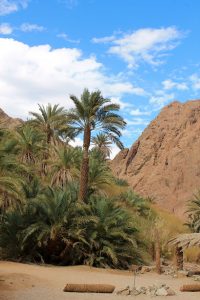
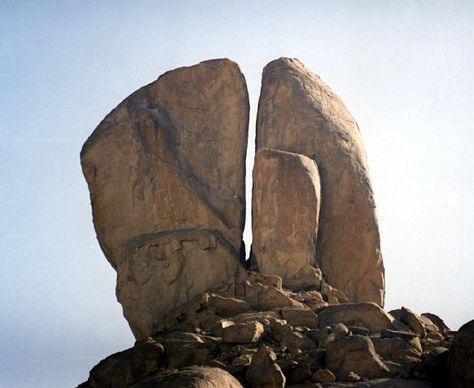
Afterwards, Moses records that the Israelites had come to the foot of the mountain where they would experience the experience of meeting God, when they would receive plates from the Ten Commandments of God.
This report has long been criticized by many historians.
But not far from a split rock and an ancient altar, scholars have come across an unusual mountain that Arab pastors call “Moses mountain”(“ Jebel Musa ”in Arabic). Today, that mountain is known as Jebel El Loz. This mountain was thoroughly explored.
The remains of an ancient Egyptian millstone were found at the foot of the mountain. Does that mean it was brought here by the Israelis? Also, many circular stone structures were found at the foot of the mountain and all around it that represented the remains of long-used tents. Are these the remnants of the tents that the Israelites once used? Moses notes that the mountain was fenced and that people should not be too close to approach it because of the sacred rite that was to be performed.
Interestingly, at the foot of this mountain, scientists have found traces of the fence that once existed around the mountain, as well as many stone slabs with drawings of human feet. long ago, when certain places were to be marked sacred.
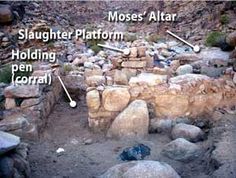
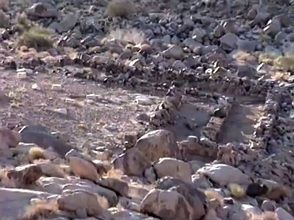
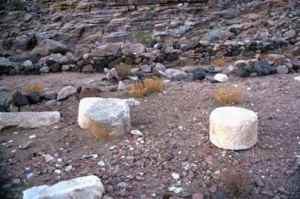
Does this mean that we have the remnants of the customs accepted by the Israelites in Egypt and applied here? Also, at the foot of this mountain, scientists found an old altar. This altar is low and built of stone, exactly as Moses was commanded.
One of the most famous events associated with this mountain is the making of an altar to a golden calf.
This altar was found not far from the mountain and is now fenced off by Saudi authorities. Many drawings of cows have been found on this altar marking the Egyptian cult of the god Apis.
Moses says that he personally burned the golden calf and threw his ashes into a stream that ran out of the mountain. Indeed, at the foot of this mountain, one can clearly see the drained water course of a river that used to flow there. Finally, Moses gives an incredible account of the events when God “went down into the mountain in fire and thunder.” While studying the rocks on this mountain, scientists noticed that its peak is very black, unlike the rest of the mountain, which is light in color. The analysis found that the top of the mountain is made of obsidian black mineral, which is produced at high temperatures.
Is the presence of this mineral at the top of the mountain a consequence of the supernatural event that Moses describes?
It seems amazing, but scientific research confirms all the details of Moses’ report related to the events following the crossing of the Red Sea.
